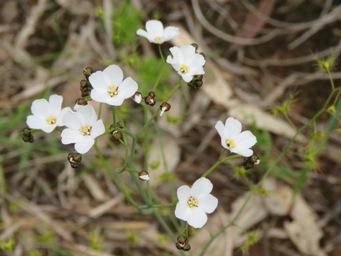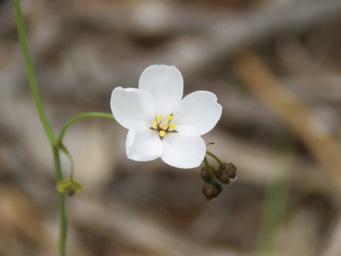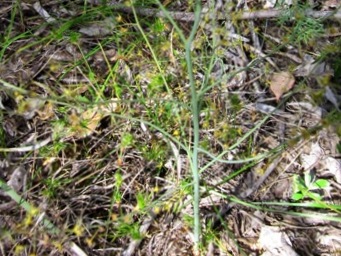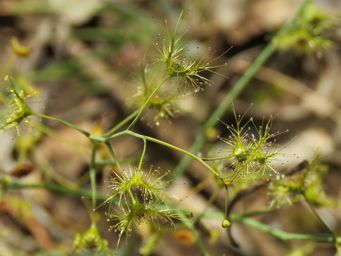Australia So Much to See
Copyright (C) 2013 AustraliaSoMuchtoSee.com. All reights reserved

Sources used for identification of wildflowers shown on these pages and regions where they occur see Credits
These pages will
feature some of the wildflowers we have photographed in Western Australia, and where possible, identified. If you
are able to help identify further flowers, or correct any I may have wrong, please contact us.
Information given for each species
will give botanical name, known common names, describe the flower, give time of year it flowered, and where it was photographed, and
the areas it occurs in. Names have been matched to Florabase which has also been used to show distribution.
See some
of these wildflower in larger sized photos on our Flickr pages.
Drosera collina 2014 (formerly Drosera erythrorhiza subsp. collina)
Delicate tiny five petalled white flowers in a cluster on
a thick stem approximately three centimetres tall. No foliage at flowering stage with flowers growing in leaf litter.
Identification of rosette alone is difficult and these differing coloured rosettes are probably what is commonly known as Drosera
collina
Autumn
Perth region and northern areas of the South West region and adjacent areas of the Wheatbelt.
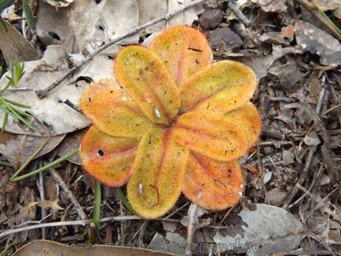
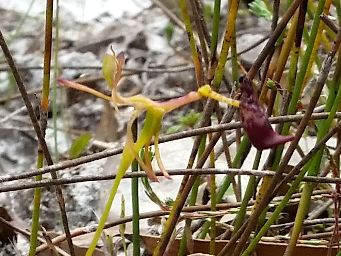
Drakaea livida, Warty Hammer Orchid
One of a group of distinctive and unusual shaped small orchids which mimic a wasp to fool it into
"mating" with what looks and smell like a female wasp, thus spreading pollen from stamen to anther
October
Bridgetown, South
West region, and found through the lower Great Southern, South West, Perth and adjacent areas of the Wheatbelt regions
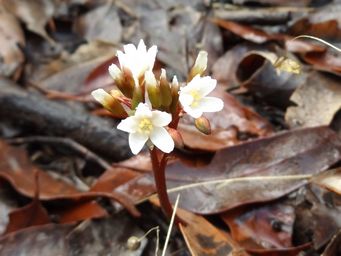
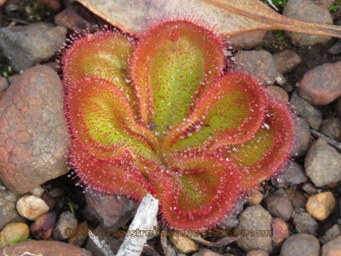
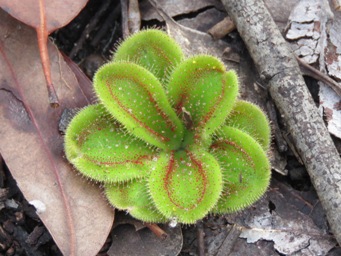
Drosera drummondii 2014 (formerly Drosera menziesii subsp. penicillaris), Pink Rainbow Sundew (climbing form)
Insectivorous, semi-free
standing or climber, delicate pink flowers with five petals in a small cluster at top of climber. Shades and petal width
can vary. Style filaments Smooth stems which can grow to 1.1 metres, with hairy buds. Lamina round. Similar
to Drosera menziesii and hard to differentiate
Spring
Bridgetown, South West Region, Western Australia and found through the South
West, Wheatbelt, and Great Southern Regions and along the coast to Esperance
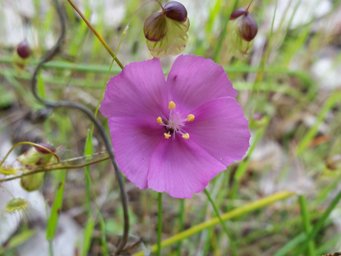
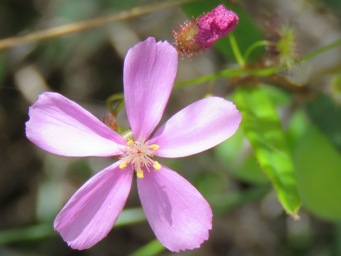
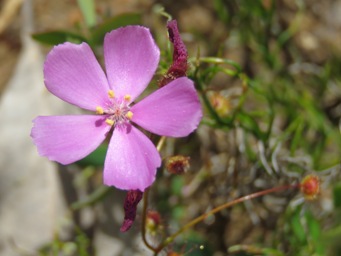
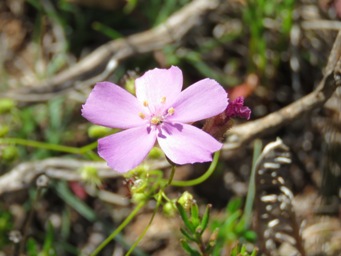
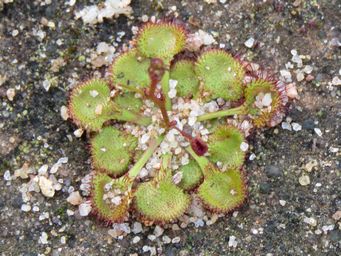
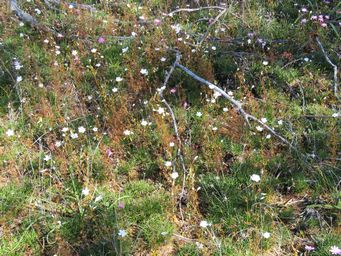
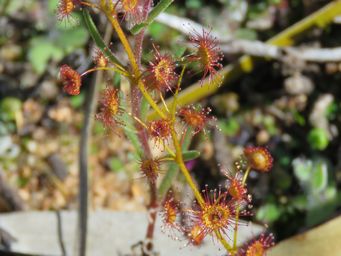
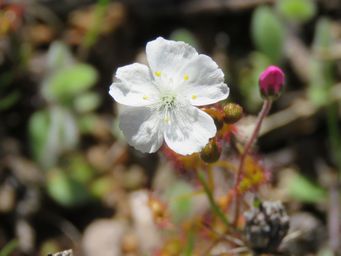
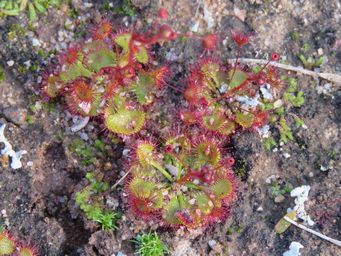
Drosera andersoniana, Sturdy Sundew
A base rosette of spoon shaped foliage, plus upright stems with red fringed almost circular lamina
that have a slight dip the upper edge. Stems and buds hairy. Five petalled creamy-white flowers with yellow anthers, and sparse divided
style filaments. Also has a pale pink form.
The pink buds in these photos are Lawrencella rosea.
August
Totadgin Rock,
Merredin, Wheatbelt region, Western Australia. Found mostly in the central parts of the Wheatbelt, with a few recorded from
the Mid West and Goldfields regions. Favours the damp environment at the base of granite outcrops.
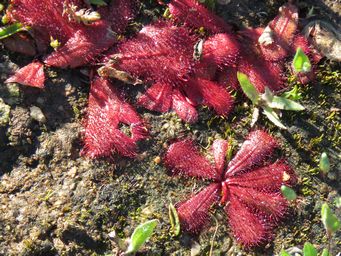
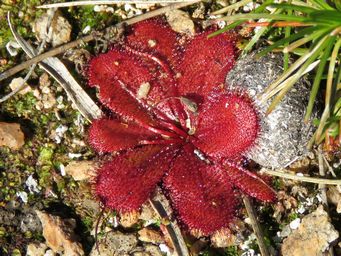
Drosera bulbosa, Red-leaved Sundew
Foliage only photographed, post flowering. A foliage rosette with a raised midrib in each leaf. Foliage turns red following flowering. Small white flowers with white stamens and a green ovary, one flower per stem. Flower stems droop down when flowers fade, and parts of the stems can be seen in the first photo above.
August when photographed
post flowering
Karomin Rock, Shire of Nungarin and Totadgin Rock Merredin, Wheatbelt region, Western Australia. Found in the Mid West,
Wheatbelt, Great Southern and parts of the South West regions.
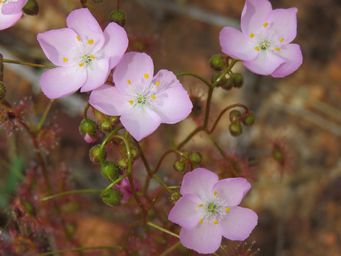
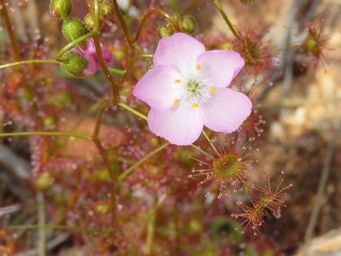
Drosera eremaea 2014 (formerly Drosera macrantha subsp. eremaea)
A freestanding Sundew with delicate pale pink flowers in a cluster
at the top of each stem. Stamens are yellow and style filaments are divided. Lamina are slightly heart-shaped.
August
Latham,
Shire of Perenjori, Mid West region, Western Australia. Can be found in the Gascoyne, Mid West, northern Wheatbelt and into
the Goldfields.
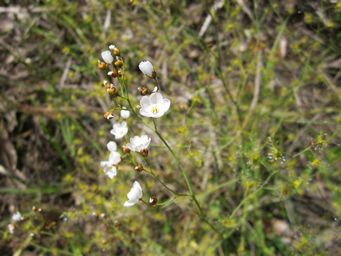
Drosera gigantea subsp. gigantea
Insectivorous free-standing sundew with a tall branching stem, white flowers with five
petals, small cluster at top of branches. Lamina (sticky modified leaves) are crescent shaped (at right).
October
Bridgetown,
South West Region, Western Australia and found through the South West, areas of the Great Southern and Wheatbelt regions. Favours
winter wet areas, sandy soils and edges of swamps and creeks.
